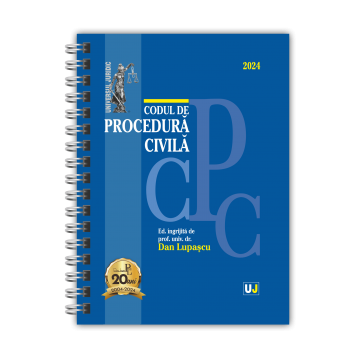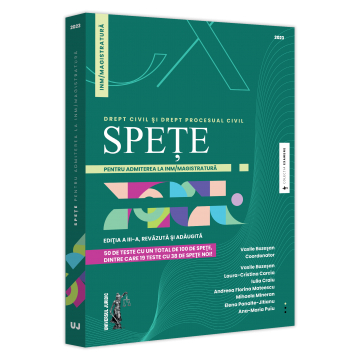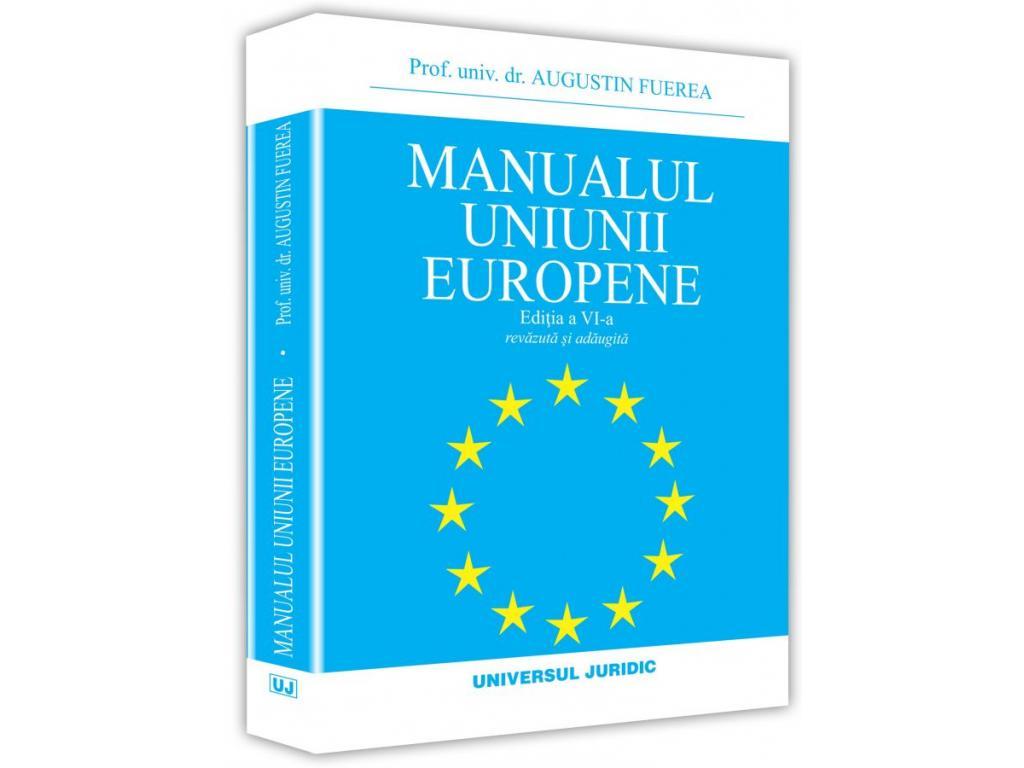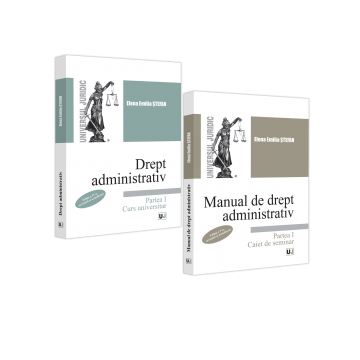Publisher: Editura Universitara
Author: Raul Felix Hodos
ISBN: 978-606-28-1223-2
DOI: https://doi.org/10.5682/9786062812232
Publisher year: 2021
Edition: I
Pages: 274
- Description
- Download (1)
- Authors
- Content
- More details
- Where to find it
- Reviews (0)
The monograph "Electronic payment" represents the doctoral thesis of the author and was defended at the Faculty of Law of the "Babes-Bolyai" University, being appreciated with the qualifier "magna cum laude".
-
Electronic Payment
Download
LIST OF ABBREVIATIONS / 11
INTRODUCTION / 14
CHAPTER I. PAYMENT AND ELECTRONIC PAYMENT INSTRUMENTS / 17
1.1. The electronic environment, the premise of the existence of electronic payments / 17
1.1.1. Information society / 17
1.1.2. Regulatory or self-regulatory? / 19
1.1.3. Business and information technology / 22
1.1.4. Electronic commerce / 24
1.1.4.1. Notion / 24
1.1.4.2. Characters of e - commerce / 29
1.1.5. Electronic administration / 30
1.1.5.1. Modernization of local public administration / 30
1.1.5.2. The concept of e-government / 33
1.1.5.3. National Electronic System / 35
1.1.5.4. E-justice / 37
1.1.5.5. Effects and benefits of administrative computerization / 40
1.1.6. The service notion of the information society / 41
1.2. General legal framework of payment / 43
1.2.1. Particularities of the payment / 43
1.2.1.1. The notion of payment / 43
1.2.1.2. Legal nature of the payment / 44
1.2.1.3. Payment categories / 45
1.2.1.4. Payment circumstances / 45
1.2.1.5. Imputation of payment / 47
1.2.1.6. Time of payment / 47
1.2.2. Electronic payments and transfers of funds / 48
1.2.2.1. Payment methods / 48
1.2.2.2. Classification of electronic funds transfers / 50
1.2.3. The principle of freedom of payment / 52
1.2.3.1. Writing and interpreting the principle / 52
1.2.3.2. Exceptions to the principle of freedom of payment / 53
1.2.3.3. Single Euro Payments Area (SEPA) / 54
1.3. Means of payment / 57
1.3.1. Notion / 57
1.3.2. Money - universal means of payment / 58
1.3.2.1. What is currency? / 58
1.3.2.2. The functions of money / 59
1.3.2.3. Currency - means of payment / 61
1.3.3. Fiduciary currency / 62
1.3.4. Scriptural currency / 62
1.3.5. Electronic currency / 63
1.3.5.1. Preliminaries / 63
1.3.5.2. The notion of electronic money / 64
1.3.5.3. Principles of carrying out the activity of issuing electronic money / 66
1.3.5.4. Electronic services issuance contract / 68
1.3.5.5. Form of the contract for the issuance of electronic money / 70
1.4. Payment instruments / 71
1.4.1. Classic and modern payment instruments / 71
1.4.2. Trade effect. Consequences of computerization / 71
1.4.2.1. Introductory considerations / 71
1.4.2.2. French computerized trading system 74 1.4.2.3. Computer change / 78
1.4.2.4. Modernization of the Romanian bill of exchange law / 81
1.4.3. Check and form of electronic check / 84
1.4.3.1. Notion / 84
1.4.3.2. The legal nature of the check / 84
1.4.3.3. Elements of the check / 85
1.4.3.4. Functions and mechanism of the check / 87
1.4.3.5. Check computerization / 88
1.4.4. The transfer / 89
1.4.4.1. Notion / 89
1.4.4.2. The transfer mechanism / 89
1.4.4.3. Transfer through the SWIFT / 90 network
1.4.4.4. Internet payments / 91
1.4.5. Payment cards / 115
1.4.5.1. Notion / 115
1.4.5.2. Brief history / 116
1.4.5.3. Definition / 117
1.4.5.4. Card classification / 119
1.4.5.5. Legal regime of payment cards / 119
1.4.6. Other payment instruments / 127
1.4.6.1. Documentary collection / 127
1.4.6.2. Documentary letter of credit / 130
1.5. Conclusions / 135
CHAPTER 2. ELECTRONIC PAYMENT SERVICE INFRASTRUCTURE AND OPERATORS / 137
2.1. Electronic signature / 137
2.1.1. Notion / 137
2.1.1.1. Definition of signature / 137
2.1.1.2. The concept of electronic signature / 138
2.1.2. Types of electronic signatures / 139
2.1.2.1. Simple electronic signature / 139
2.1.2.2. Extended electronic signature / 140
2.1.2.3. Certified electronic signature / 144
2.1.3. Protection of personal data / 147
2.1.3.1. The right to the protection of personal data - a fundamental human right / 147
2.1.3.2. The content of the right to personal data protection in the information society / 149
2.1.3.3. Electronic signature and respect for the right to privacy / 153
2.2. Electronic document / 154
2.2.1. The notion of electronic registration / 154
2.2.1.1. Preliminaries / 154
2.2.1.2. The European and international concept / 155
2.2.1.3. The Romanian concept. Definition / 157
2.2.1.4. Content of electronic documents / 158
2.2.2. Electronic notarial deeds / 161
2.2.2.1. Notion / 161
2.2.2.2. The concept of an authentic instrument / 162
2.2.2.3. Electronic notarial deed / 163
2.2.3. Electronic fiscal documents / 163
2.2.3.1. Legal framework / 163
2.2.3.2. Electronic invoicing / 164
2.2.4. The probative value of electronic documents / 166
2.2.4.1. The notion of proof / 166
2.2.4.2. The probative value of the elements of the electronic document / 173
2.2.4.3. Dating of the electronic document / 173
2.2.4.4. Proof of the place where the document was drawn up / 175
2.2.4.5. Original electronic document / 175
2.2.4.6. Sarcina probei / 176
2.2.4.7. Archiving of electronic documents / 179
2.3. Payment systems / 184
2.3.1. Introductory considerations / 184
2.3.1.1. Preliminaries / 184
2.3.1.2. Notion / 185
2.3.1.3. Freedom of access for payment service providers to payment systems / 186
2.3.2. Payment systems in the USA / 187
2.3.2.1. FEDWIRE and ACH (Automated Clearing House) payment systems / 187
2.3.2.2. CHIPS / 188 payment system
2.3.3. European payment system TARGET2 / 189
2.3.3.1. Notion / 189
2.3.3.2. Structure and operation of the TARGET2 / 190 system
2.3.3.3. Participants in the payment system / 192
2.3.3.4. Application of the TARGET2 system in Romania / 192
2.3.4. TRANSFOND system / 193
2.4. Electronic payment service providers / 194
2.4.1. Financial service providers / 194
2.4.1.1. Notion and classification / 194
2.4.1.2. Payment services / 195
2.4.2. Credit institutions / 195
2.4.2.1. Legal framework / 195
2.4.2.2. Credit institutions and banking activities / 196
2.4.2.3. Minimum conditions for authorization of credit institutions / 197
2.4.2.4. About the functioning of credit institutions / 199
2.4.3. Electronic money issuing institutions / 200
2.4.3.1. Legal framework / 200
2.4.3.2. Categories of electronic money issuers / 201
2.4.3.3. Authorization of electronic money issuing institutions / 203
2.4.3.4. Conditions of initial authorization / 205
2.4.3.5. Operating conditions / 205
2.4.4. Payment institutions / 206
2.4.4.1. Legal framework / 206
2.4.4.2. Categories of payment institutions / 207
2.4.4.3. The activity of payment institutions / 207
2.4.4.4. Authorization and operation of payment institutions / 208
2.5. Conclusions / 209
CHAPTER 3. GENERAL THEORY OF LEGAL LIABILITY IN THE FIELD OF ELECTRONIC TRANSFERS OF FUNDS / 212
3.1. Legal liability in the electronic space / 212
3.1.1. Preliminaries / 212
3.1.2. The seat of matter / 213
3.1.3. Legal liability in case of electronic funds transfers / 214
3.2. Civil liability / 215
3.2.1. Discussion on the legal nature of civil liability in case of electronic transfers of funds / 215
3.2.2. Conditions / general / of / civil liability in case of electronic funds transfers / 217
3.2.2.1. Particularities / 217
3.2.2.2. The first condition: the existence of the illicit deed / 217
3.2.2.3. Injury / 218
3.2.2.4. Causality report / 219
3.2.2.5. Culpa / 220
3.2.3. Civil liability of operators of electronic funds transfer systems in case of damage to third parties / 221
3.2.4. Legal liability of the National Bank of Romania / 224
3.2.5. Specific civil liability in the case of electronic transfers / 227
3.2.6. Civil liability in case of electronic transfers of funds made with the help of the card / 229
3.3. Criminal liability / 235
3.3.1. Preliminaries / 235
3.3.2. Aspects / common to crimes related to electronic payments / 236
3.3.2.1. Legal framework / 236
3.3.2.2. Financial crime in the electronic space / 237
3.3.3. Offenses related to the transfer of electronic funds / 238
3.3.3.1. Computer fraud / 238
3.3.3.2. Carrying out financial operations fraudulently / 242
3.3.3.3. Acceptance of financial operations performed fraudulently / 247
3.4. Conclusions / 249
FINAL CONCLUSIONS AND PROPOSALS FOR LAW FERENDA / 251
BIBLIOGRAPHY / 255
Treatises, monographs, university courses / 255
Studies, articles / 267
E-bibliography / 273
For a long time after the Second World War, automated payments, and then computerized, were just an optimization of banking services, intended for knowledgeable professionals in the field. The end of the second millennium of our times also brought with it the generalization of the computerization of payments, with the immediate consequence of opening to the general public an instantly accessible global market. Thus, initially, the regulatory problems were mainly internal, at the banking level, but later became a global phenomenon, following the access to computerized payment services of other users, companies or individuals - final consumers. The equation generated by this economic phenomenon, complicated by the continuous technological development, is, from a legislative point of view, in permanent solution, the technological changes being hardly followed by the legal norms.
The activity of regulating the activities of computerized payments, in an early period of technologicalization of the financial economy, respectively, of computer or electronic payments, today, is extremely discussed, both due to the specific terminology and, especially, to the different approaches. or European. The American system, more liberal and based on the principle of technological neutrality, allows a sufficient level of self-regulation to encourage innovation and improvement of the technology used, while European legislation is much stricter in terms of the actors' ability to set their own limits. although it supports the application of the same principle. By way of example, we can refer here to the way of identifying the person in the electronic environment, necessary in the technology of electronic signature: in the case of Europeans it is reduced only to the use of cryptographic codes, while on the American continent, biometric identification is allowed, at least as safe.
The Romanian legislation in the field is created by taking over the existing regulations at the level of the European Union, lacking a necessary correlation both with the general legal norms and with the norms specific to some fields such as the fiscal or criminal one. This phenomenon is also due to the non-unitary treatment at the level of legal doctrine of the legal aspects of electronic payments, the existence of different meanings for the same terms used in legal context and, last but not least, the shyness shown by lawyers towards the approach to information technology.
The general objective of the paper was established starting from these legal aspects, so that it can answer in the most correct way the question "what are electronic payments and how should they be regulated?".
The specific objectives that lead us to achieve the general objective have been identified as follows:
1) Payment and payment instruments:
- defining the electronic environment as a premise of the existence of electronic payments;
- establishing the general legal framework of payment, defining this notion as a means of settling obligations, defining the electronic transfer of funds and the principle of freedom of payment;
- classification of means and instruments of payment and their analysis related to the electronic environment;
2) Infrastructure and payment systems:
- analyzing the signature and the document made electronically, technical elements without which electronic payments could not be made;
- analyzing the payment systems used domestically and internationally, as well as the relations between them and their users, providers of electronic payment services or beneficiaries;
3) Legal liability in the matter of electronic payments:
- identifying the mechanisms of legal liability of the actors in the field of electronic payment services, from a triple perspective: civil, administrative and criminal.
The concept of electronic payments is relatively new, both worldwide, where it has been defined in the last fifty years, and especially in Romania, where it appeared twelve years ago. The approach is necessary to be multidisciplinary, starting from an economic and technical reality that requires the research of various bibliographic sources, both domestic and especially from countries with richer experience in the field. The multidisciplinarity of the concept of electronic payments implies not only the deepening of the matter of civil obligations, but also the consultation of the specific doctrine from the banking, informatics, criminal, administrative or fiscal law. The absence of borders in the case of the electronic environment raises issues specific to international law, both public and private. On the other hand, all documentation must take into account domestic legislation, even if it is the implementation of European or international regulations in the field, to identify the errors inherent in establishing simple and clear rules in a difficult field. If we can find out relatively easily what electronic payments are, it is much harder for us to find out how they should be regulated, given all the premises of the given problem. We consider, however, that the application, as a cornerstone, of the principle of technological neutrality in our research approach, will lead us to a correct and expected result, that of being able to make certain proposals of law ferenda, to try to clarify the current regulation.
Customer Support Monday - Friday, between 8.00 - 16.00
0745 200 718 0745 200 357 comenzi@editurauniversitara.ro
6359.png)
![Electronic Payment [1] Electronic Payment [1]](https://gomagcdn.ro/domains/editurauniversitara.ro/files/product/large/plata-electronica-raul-hodos-3050-8734.jpg)














